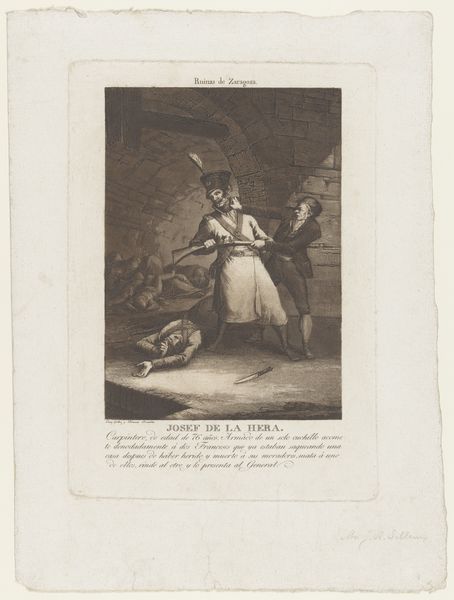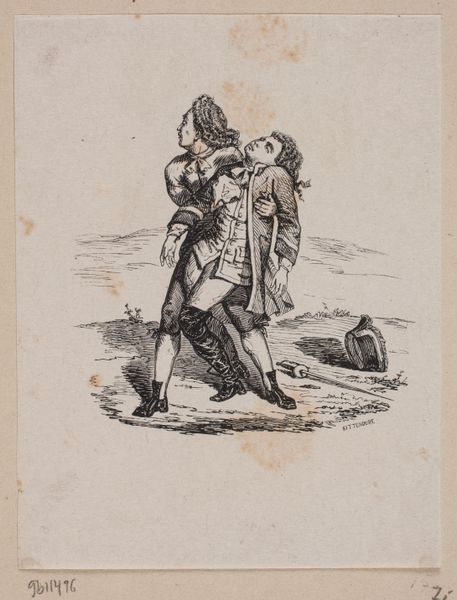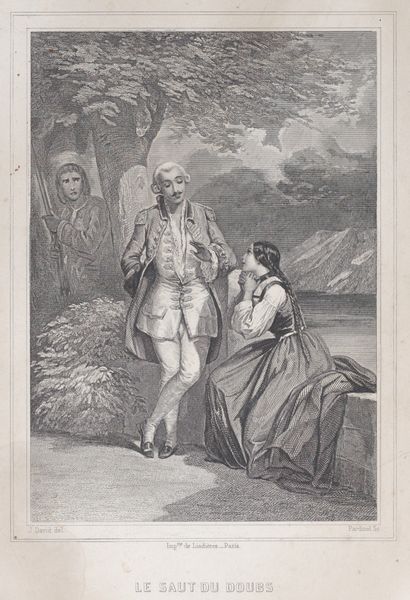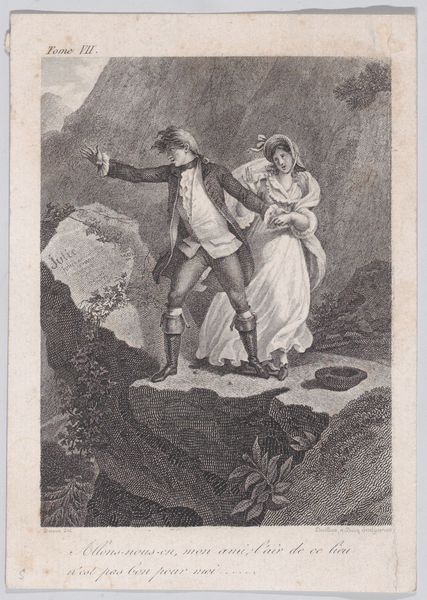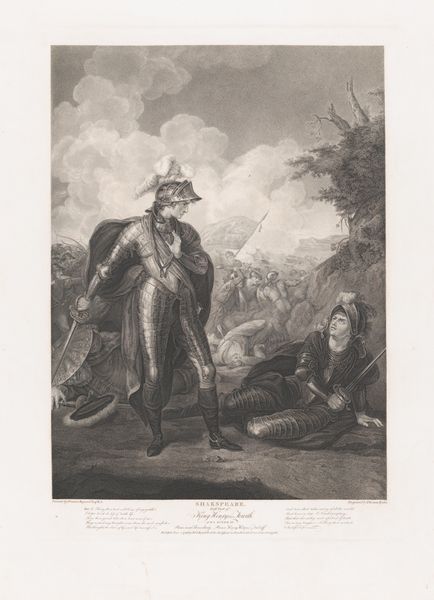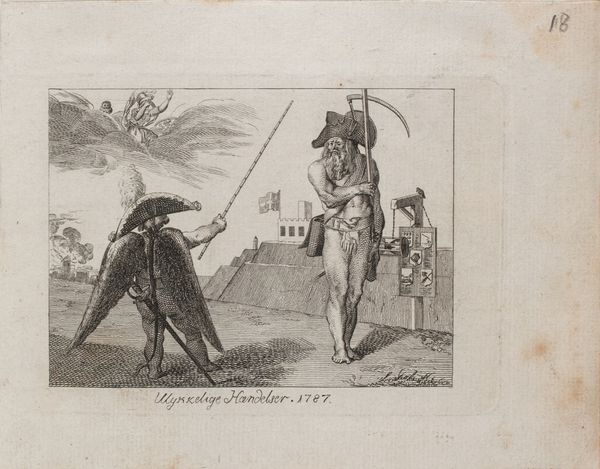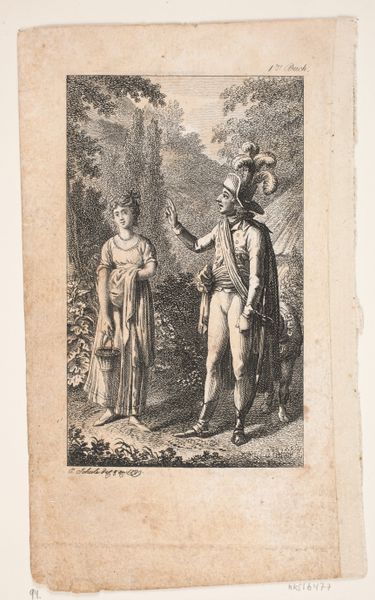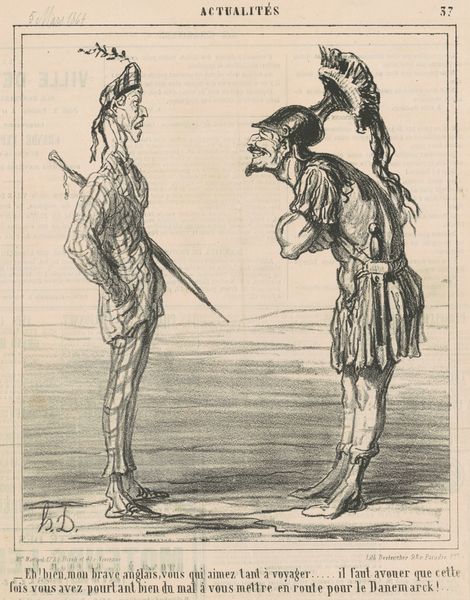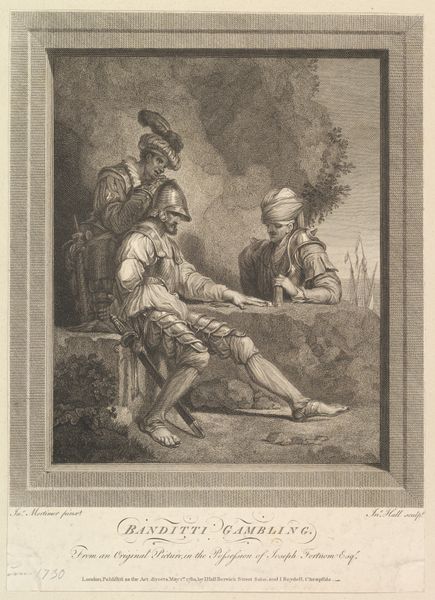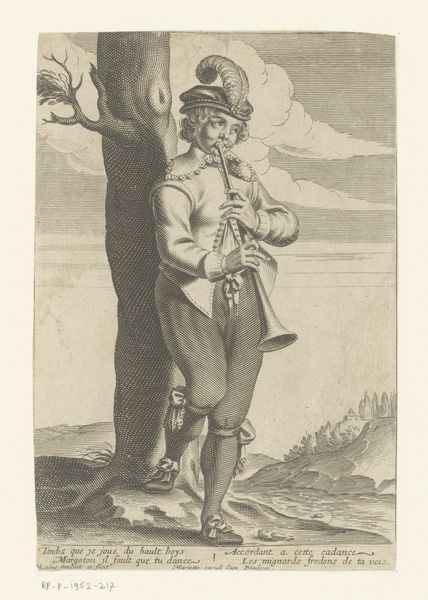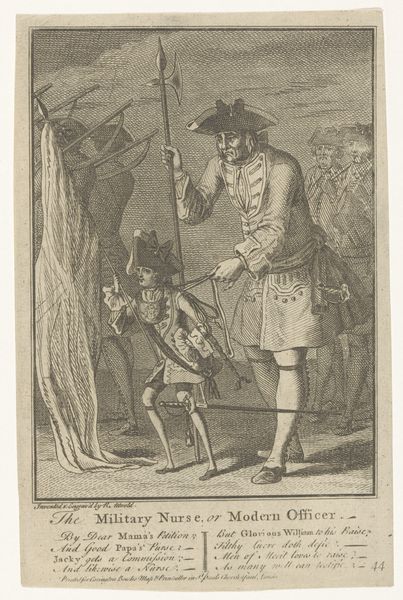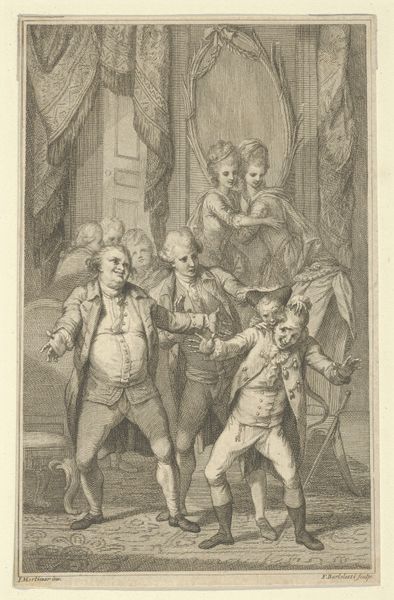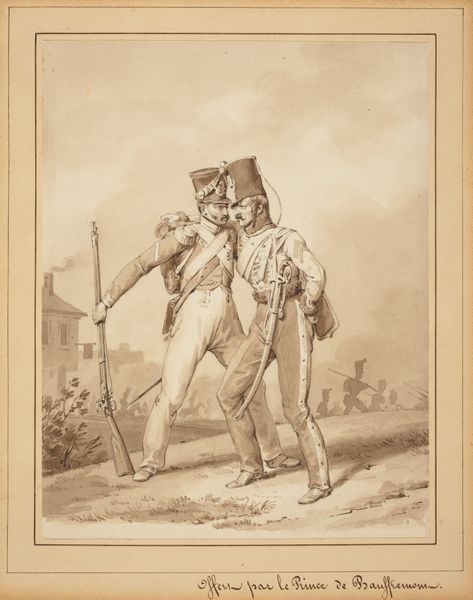
print, engraving
#
portrait
#
neoclacissism
#
narrative-art
# print
#
figuration
#
history-painting
#
engraving
Dimensions: 146 mm (height) x 83 mm (width) (bladmaal)
This small print was made by Georg Christian Schule, sometime around the turn of the 19th century. It is an engraving, meaning that the artist would have used a sharp tool called a burin to cut lines into a metal plate, which was then inked and used to make impressions on paper. The crisp, precise quality of line is characteristic of this process, as is the possibility of subtle gradations achieved through hatching and cross-hatching. Here, Schule has used these techniques to create a dramatic scene, with a soldier confronting a woman in distress. The material properties of the engraving process lend a sense of formality and distance to the image, appropriate to the social hierarchy being depicted. Engraving was a highly skilled and laborious process, requiring years of training to master, but it also allowed for relatively easy reproduction and dissemination of images. Understanding the craft and modes of production gives us deeper insight into the complex meaning of the artwork.
Comments
No comments
Be the first to comment and join the conversation on the ultimate creative platform.
